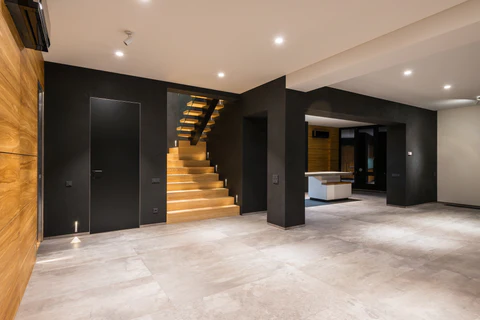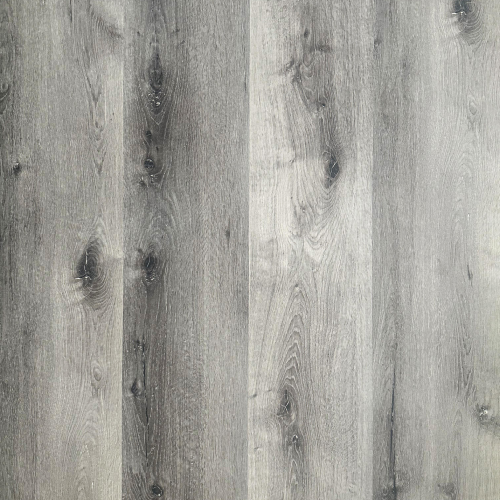
In terms of interior design for compact areas, tiles may be a game-changer. You may turn a small, crowded space into a large retreat by using the proper kind of tile and imaginative layout. Yet, there are so many tile alternatives that it might be difficult to know where to begin. We’ll discuss the strategies in this post that will help you use tiles to enlarge a tiny space. We can help you with everything from the greatest tile kinds to unique methods to employ them. This book will provide you the ideas and knowledge you need to maximise your little space, whether you’re renovating a small bathroom, kitchen, or any other area in your house. Now let’s get going!
Which Tiles are Best Suited for Small Rooms?
There are a few essential characteristics that may make a significant impact when choosing the best tiles for a small area in terms of giving the impression of greater space. Here are some tile examples that might work well in tiny spaces:
- Subway tiles – Subway tiles are a classic option that can make a small space appear larger. Their rectangular shape can create a sense of length and the grout lines can be kept minimal, further enhancing the sense of space.
- Large format porcelain tiles –Large format porcelain tiles are a popular option for creating a seamless look in a small space. They come in a variety of light colors and can be paired with darker accents to create depth.
- Mosaic tiles – Mosaic tiles can be a great option for creating a focal point in a small space. They come in a range of colors and can be used to add texture and interest to a small room.
Think about the room’s size and configuration before making a tile decision. If the space is very compact, it’s critical to select tiles that will contribute to the feeling of space. Simple tile designs can, as was already noted, contribute to the feeling of openness and airiness. A tiny room might be overwhelmed by intricate patterns and busy decorations, so stay away from them. Lighter hues tend to reflect more light, giving the impression that a space is bigger and brighter. When picking tiles, think about going with lighter alternatives like white or cream.
You can give a tiny area a feeling of spaciousness and make the space seem more open and welcoming by choosing the appropriate tiles for it. When choosing tiles for your subsequent remodeling job, keep these suggestions in mind to produce a beautiful and useful room that you’ll adore.
Creative Ways to Incorporate Tiles in Small Spaces
When it comes to small spaces, tiles can be used in creative ways to enhance the visual appeal of the area. Here are some ideas on how to incorporate tiles into your small space:
1. Using Tiles to Create a Feature Wall
A feature wall may be a fantastic way to give a tiny area personality. Consider utilizing a bold pattern or color when selecting granite tiles for a feature wall to create a stark contrast to the other walls. This may catch the eye and give the room depth, which enlarges it. It’s crucial to pick a pattern or color that goes well with the room’s general design.
2. Using Tiles to Create a Backsplash
A backsplash is a terrific way to use tiles in a tiny kitchen or bathroom. In addition to shielding the wall from water damage, a backsplash gives the room aesthetic flair. Consider utilizing smaller tiles in a pattern or color that matches the adjacent walls or worktops when choosing tiles for a backsplash.
3. Using Tiles to Accentuate Certain Areas in a Small Space
Using tiles to highlight particular locations is another method to employ them in a limited space. For instance, by tiling the area surrounding a fireplace or built-in bookcase, you may call attention to that element and give the room more visual appeal. Also, putting tiles on the floor or walls in a particular location helps define the space and give the impression that it is bigger and better organized.
The size, color, and pattern of the tiles must be carefully considered when incorporating them into a compact area. You may improve the aesthetics of your little room and give the impression that it is larger by using tiles in inventive methods.
4. Creating a Tile Mural
A tile mural may be a distinctive and attractive addition to a little room. You may combine various tile sizes, shapes, and colours to make a mural. Think of painting a mural on a tiny portion of the wall or on a vertical surface like a kitchen backsplash or a stair riser. This may give the room depth and aesthetic intrigue.
5. Using Tiles to Create a Border
A border made of tiles is a terrific way to add a splash of colour and design to a tiny area. Think of utilising a tile border to outline a particular space, such as the edge of a room or the area surrounding a mirror or window. This may give the area a decorative touch and give it a more elegant vibe.
Tips and Tricks for Making Your Room Look Bigger
Tip 1: Lighten Up – Choose Light-Colored Tiles
Using light-colored limestone tiles is one of the easiest methods to make a small area feel larger. Brighter hues reflect more light and give a room a bigger, airier impression. You may use light-colored tiles in your compact space in the following ways:
-
Choosing the Right Color
Take into account the room’s overall color scheme while choosing tiles. Choose white or beige tiles to create a bright, open environment if the room receives a lot of natural light. Consider utilizing a light blue or green tile to offer a splash of color while still keeping the area bright and airy if the room is dark and lacks natural light.
-
Playing with Shade
A tiny area may provide depth and intrigue by utilising several tones of the same hue. For a feature wall or backsplash, think about utilising several tones of white or grey to provide a subtle gradient effect.
-
Adding a Border
Without overpowering the area, a border of darker tiles might offer aesthetic appeal. To designate a particular region, such as the perimeter of a room or the area surrounding a mirror or window, think about adding a border of darker tiles.
-
Using a Mix of Textures
A tiny area may provide dimension and intrigue by including a variety of textures. To get a subtle contrast, think about combining matte and glossy tiles in the same hue.
You can create a bright and airy ambiance that will make your little area appear larger and more appealing by putting light-colored tiles into it. To give the room depth and intrigue, think about utilising various hues and textures. You may make your modest room into a lovely and useful sanctuary by choosing the proper tiles.
Tip 2: Go Big or Go Home – Use Large Format Tiles
Using large size tiles is another approach to amplify a tiny space. Big format tiles feature fewer grout lines, which might give the impression that a room is more open and less crowded. Here are some ideas for utilising large format tiles in a compact area:
-
Choosing the Right Size
Take the room’s size into account while choosing tiles. Most big format tiles come in sizes of 12 inches or greater. While a smaller tile could be more suitable for a smaller space, a larger tile might work well in a larger room.
-
Going Vertical
A tiny area can look larger by using large size tiles vertically to provide the appearance of height. For a striking look, think about placing vertical tiles on a feature wall or in a shower.
-
Keeping it Consistent
A tiny room might feel larger and more coherent if the same large format tile is used over the whole area. To get a continuous appearance, think about utilising the same big format tile on the walls and floor.
-
Creating Contrast
Without overwhelming it, a tiny room may gain visual appeal by using a large format tile in a contrasting hue. For a striking feature wall, think about utilising a big size tile in a dark hue like black or navy.
Your little area may have a sleek and professional aesthetic that seems more spacious and open by putting large format porcelain tiles into it. If you want to add more interest, think about utilising vertical tiles, using the same tile across the room, generating contrast with a strong hue, or mixing with light-colored tiles. Even the tiniest areas can be made to feel lovely and large with the appropriate choice of tiles.
Tip 3: Play with Perception – Consider Tile Patterns
The tile pattern may significantly affect how the area is viewed when it comes to selecting the best tiles for tiny spaces. The appropriate pattern may provide the appearance of more space, making the room seem bigger than it is. Here are some suggestions to assist you in picking the ideal tile design for your little room.
- Diagonal Patterns: Diagonal patterns can create the illusion of a longer, wider room. The diagonal lines draw the eye in different directions, making the space feel more spacious and open.
- Herringbone Patterns:Herringbone patterns are made up of rectangular tiles that are arranged in a zig-zag pattern. This pattern can create the illusion of depth and width, making the space appear larger than it actually is.
- Basket Weave Patterns: Basket weave patterns are made up of small square tiles that are arranged in a woven pattern. This pattern can create the illusion of texture and depth, making the space feel more open and airy.
- Vertical Patterns:Vertical patterns can make a room appear taller and more spacious. These patterns draw the eye upward, creating the illusion of height.
- Mosaic Patterns:Mosaic patterns can create a sense of texture and movement in a small space. The small tiles used in mosaic patterns can also create the illusion of depth, making the space feel more spacious.
Think about the design and colour of the tiles as well when selecting a tile pattern for your compact area. Choose a pattern that is subtle and enhances the overall style of the room because a cluttered pattern can be overwhelming in a tiny area.
It may be quite effective to use tile patterns to amplify the appearance of space in a tiny area. Try out many patterns to see which one suits your area the best.
Tip 4: Reflect on This – Use Glossy or Reflective Tiles
Glossy or reflecting tiles, in addition to light-colored and large-format tiles, can also provide the appearance of space in a tiny room. Glossy or shiny limestone tiles reflect light, giving the impression that the space is lighter and larger.
Take the overall design of the area into consideration when choosing glossy or shiny tiles. Reflective surfaces might not be the ideal option for traditional or rustic designs, but they can work well in modern or contemporary settings. You may still pick a tile that matches your decor because glossy and reflective alternatives come in a variety of colours and designs.
Using glossy or shiny tiles as an accent in a compact area is one approach to utilise them. For instance, you might use them as a backsplash in the kitchen or bathroom or as a border around the space. Another choice is to create a feature wall out of glossy or reflecting tiles, which may give the room more depth and intrigue.
Glossy or reflective marble tiles might be trickier to work with during installation than other kinds of tiles. It’s vital to use a professional installer if possible or exercise additional caution if you’re doing it yourself since any installation flaws might be more noticeable on a shiny or reflective surface.
Remember that compared to other types of tiles, glossy or shiny surfaces might reveal smudges, fingerprints, and other markings more readily. In order to keep them looking their best and preserve the impression of space in your tiny area, regular cleaning and care is necessary.
Overall, adding glossy or reflecting tiles may be a terrific method to add brightness and the appearance of depth to your tiny area. Just make sure you pick the appropriate type and exercise additional caution when installing and maintaining it.
Tip 5: Create a Focal Point – Use Statement Tiles
The eye can easily become disoriented in tiny areas due to the scarcity of available visual space. Making a focal point using striking tiles is one approach to detract attention from the space’s size. These are tiles that stand out from the other granite tiles in the room due to their distinctive pattern or characteristic.
Making an accent wall with a striking tile is one method. You may do this behind a couch, bed, or other piece of furniture. An alternative strategy is to utilise a statement backsplash tile in the kitchen or bathroom. The tile could have a striking colour or a complex pattern. This will produce a focal point that grabs attention and stimulates the senses.
The size of the area must be considered while employing statement tiles. To prevent overpowering a tiny area, it’s essential to utilise statement tiles sparingly. In bigger spaces, you can make bolder decisions.
Being aware of the other design aspects in the space is another thing to keep in mind when choosing statement tiles. The tile should blend well with the room’s general design and colour palette. A straightforward statement tile would be excellent in a space with many other striking patterns or colours, for instance.
Finally, think about where to put the statement tile. It ought to be put where it will have the biggest impact. This may be a prominent site or one that naturally attracts attention. In a little room, you can make a lovely and distinctive focal point by strategically placing a statement tile.
Conclusion
In conclusion, choosing the proper tiles for tiny spaces may significantly alter the room’s appearance and perceived size. The use of large-format tiles, light-colored tiles, taking into account tile patterns, including glossy or reflecting tiles, using statement tiles to create a focal point, and more have all been discussed as ways to enlarge a tiny area.
It’s crucial to consider the entire design and function of the area, as well as your own tastes and your budget, when choosing tiles for tiny spaces. To get the desired effect, try out various combinations of tile kinds, colours, and patterns.





